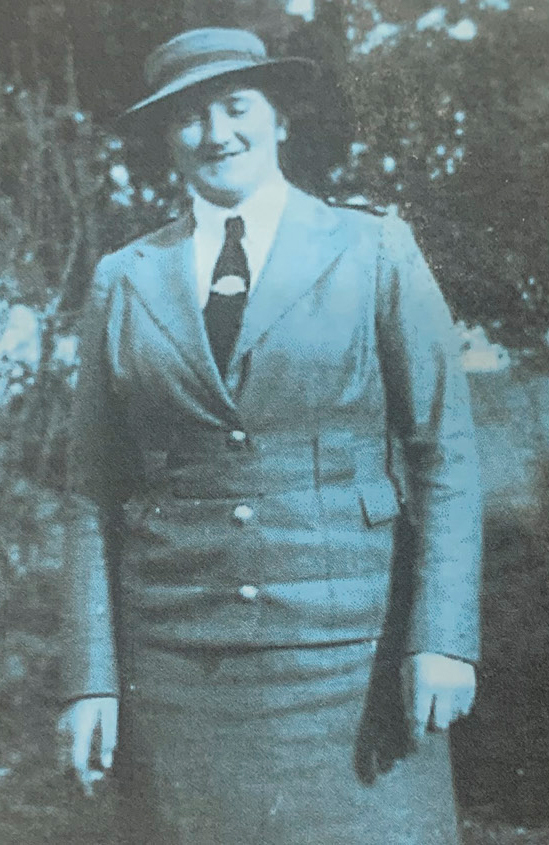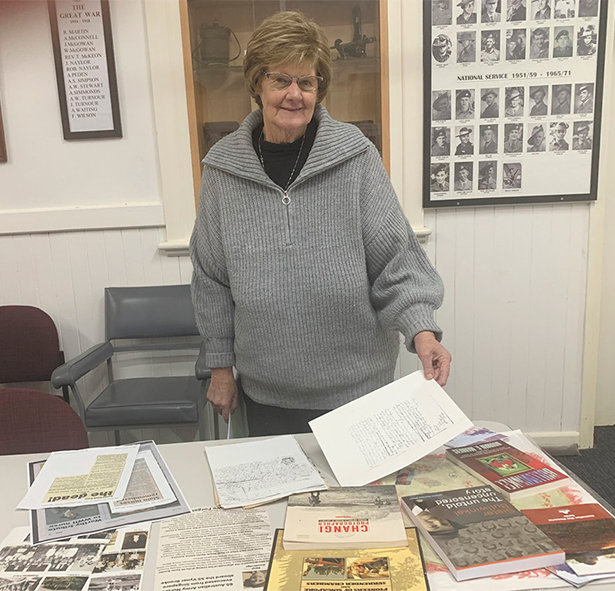Joy Cassidy presented a touching talk as guest speaker at Cohuna RSL’s last Thursday meeting. Joy spoke of her Aunt, Rosetta Joan Wight who was one of the 21 nurses massacred by the Japanese in WW2 after their surrender at Radji Beach, Bangka Island.
Born 3/12/1908 in Fish Creek, Joan was the second eldest of 4 children to Leslie Rivers Wight and Rosetta Frances Wight (nee Brown).
In 1935 Joan completed her nurses’ training in Bendigo and after the war broke out, she enlisted in the Australian Army Nursing Service as a Staff Nurse, with subsequent postings to Dandenong/Rosehill Camp and Puckapunyal.
In 1941 she was called for overseas service and sailed for Malaya on the hospital ship Wanganella, arriving on 15 September 1941.
She was posted to the 2/13th Australian General Hospital which was initially located at St Patrick’s School on Singapore Island. Between 21-23 November 1941 the entire hospital was moved across the Strait to Tampoi Hill on the southern tip of the Malay Peninsula. Due to the swift progress of the Japanese invasion force, most of the hospital staff were evacuated back to Singapore in late January 1942. Departing Singapore on the SS Vyner Brooke on 14 February 1942, Joan was one of the 65 Australian Army Nursing Service nurses on the ship. Japanese dive-bombers attacked the ship when it was close to Bangka Island. It was reported that three bombs fell directly on the ship, and a fourth ripped out part of the starboard side towards the rear. Joan sustained deep shrapnel wounds in the attack. Receiving treatment from her colleagues, Joan and another injured nurse Clare Halligan, were assisted to on of the three remaining lifeboats. The lifeboat also packed with elderly passengers and mothers with children, overturned as it hit the water. The passengers somehow managed to stay with the overturned boat and the boat drifted with the current, gradually pulling it towards Bangka Island.
The first of the lifeboats had already reached the beach, and the next day revealed more than 70 people, 22 of which were Joan and her AANS colleagues.
The stranded passengers floated the idea of surrender to Japanese authorities as a viable option but agreed to wait until the next day before deciding. The new day brought another lifeboat and several life rafts came ashore carrying British soldiers and sailors.
With 100 now on the beach it was unanimously agreed to surrender to Japanese authorities.
What followed was the Japanese soldiers separating the survivors into three groups: the officers and NCOs, the servicemen and male civilians, and the AANS nurses and at least one civilian woman. They took the first two groups in turn out of view and either machine-gunned or bayoneted them. The soldiers returned to the 22 Australian nurses and the civilian woman and ordered them to line up on the beach, facing the water. The machine-gunner opened fire, and only Vivian Bullwinkel survived.
Joan died on Radji Beach, Bangka Island, on 16 February 1942, alongside 20 AANS colleagues. She was 33 years old.
This article appeared in The Koondrook and Barham Bridge Newspaper, 28 August 2025.



